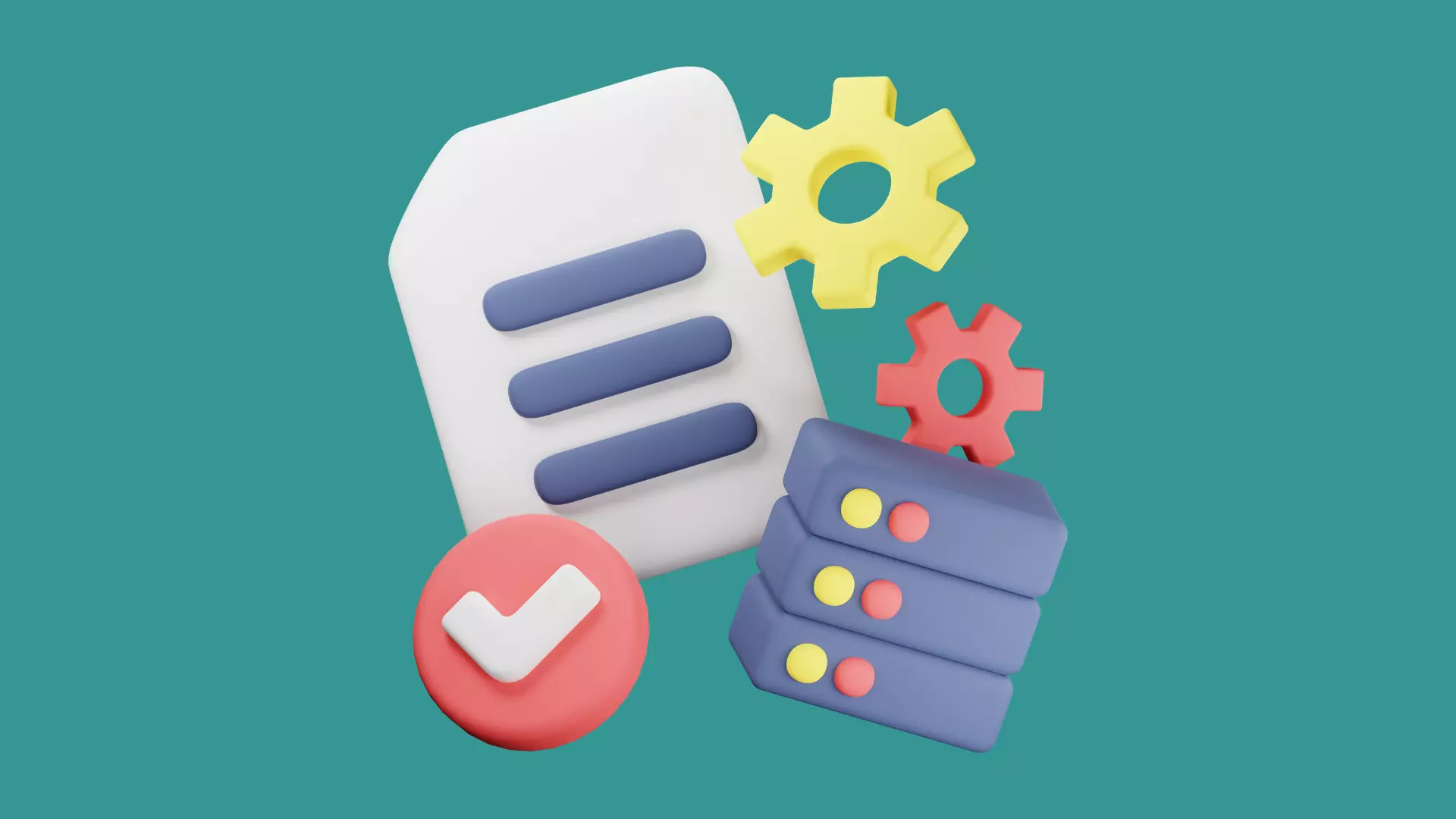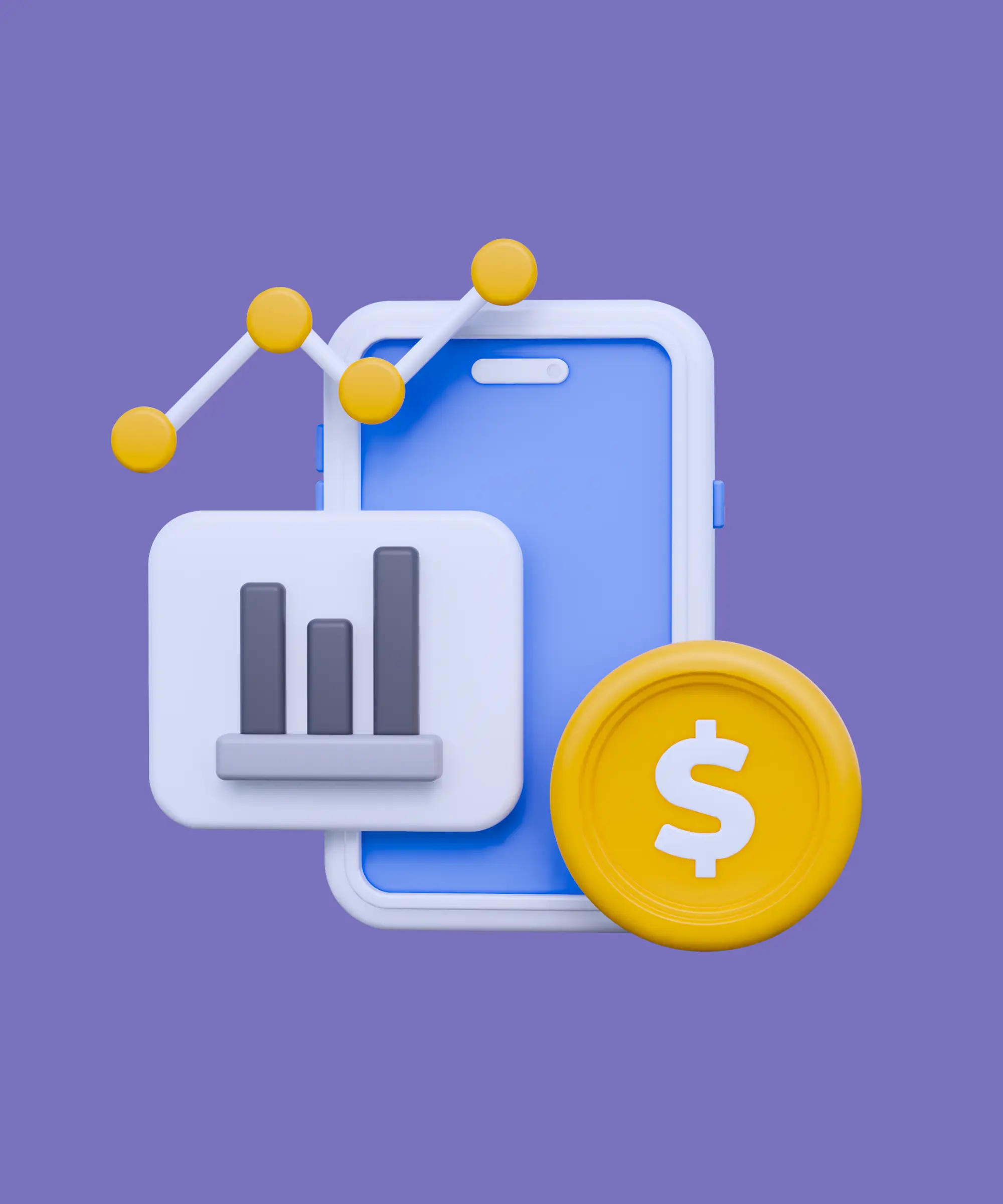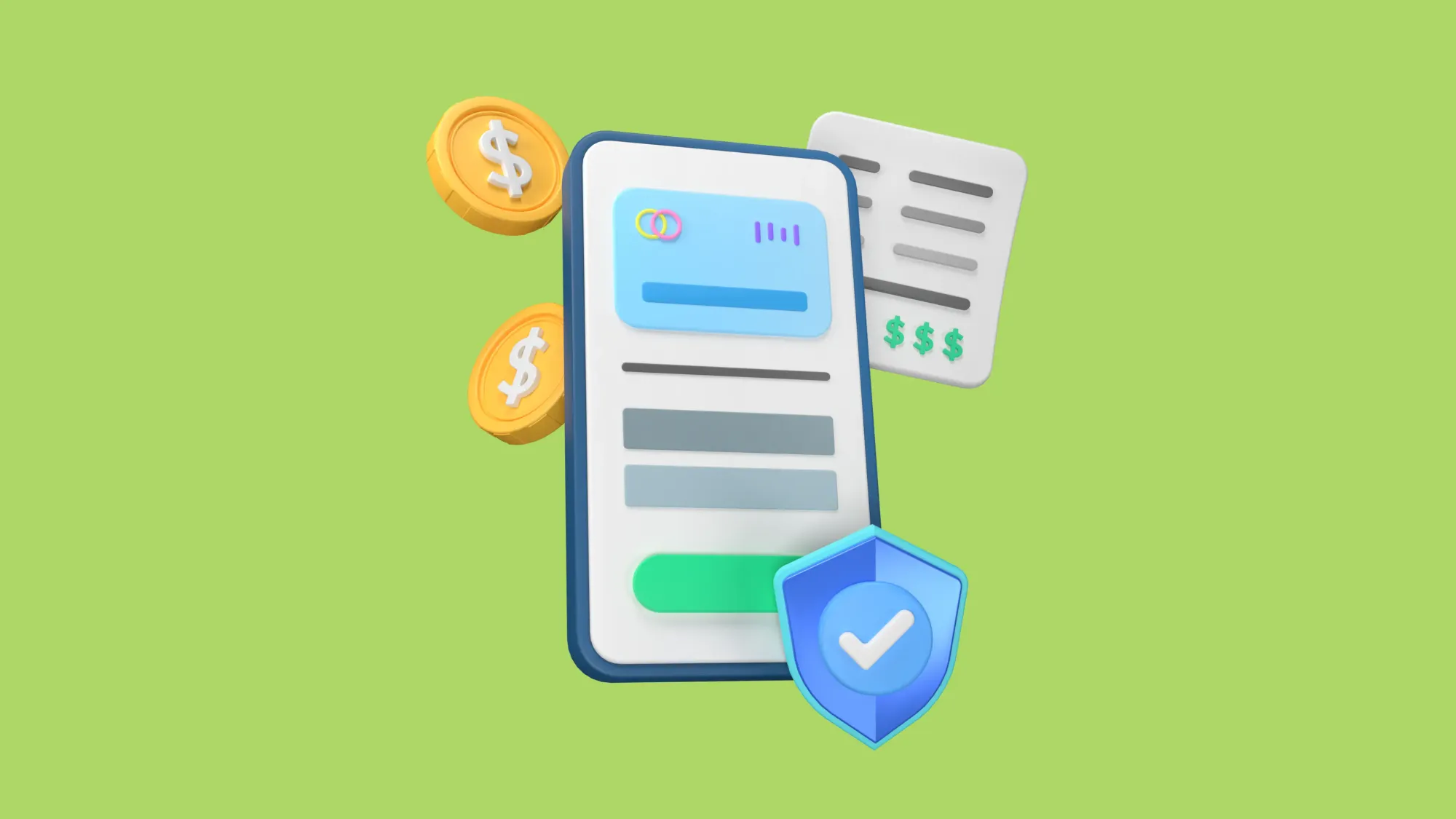In the vast expanse of the digital realm, few technologies have garnered as much attention and intrigue as blockchain. Often hailed as the backbone of the new internet, blockchain is not just about cryptocurrencies like Bitcoin or Ethereum. It's a groundbreaking method of recording data, a decentralized digital ledger that promises transparency, security, and decentralization.
The global market has been quick to recognize the potential of this technology. According to a report by Statista, the global blockchain market size is projected to skyrocket to $23.3 billion by 2024. This isn't just a mere number but a testament to the growing trust and investment in blockchain applications across diverse sectors.
Furthermore, as businesses globally grapple with the challenges of digital transformation, blockchain emerges as a beacon of hope. It promises to streamline operations, reduce costs, and foster trust among stakeholders. From finance and healthcare to supply chain and entertainment, industries are waking up to the myriad possibilities blockchain offers.
However, as with any technology in its relative infancy, there's a lot to understand and consider. This guide aims to demystify blockchain app development for businesses, shedding light on its benefits, challenges, and the roadmap to successful implementation.
Understanding Blockchain App Development
What is blockchain?
Blockchain, in its simplest form, is a digital ledger. But unlike traditional ledgers, it's decentralized, distributed across a network of computers, often referred to as nodes. Each entry in this ledger is a block, and these blocks are linked together in a chronological order, forming a chain. What makes blockchain particularly unique is its immutable nature. Once data is added to the blockchain, it's nearly impossible to alter without changing every subsequent block, which would require the consensus of the majority of the network.
How does it work?
To truly grasp the potential of blockchain, it's essential to understand its inner workings:
- Transaction initiation: It all begins when a user initiates a transaction, like sending cryptocurrency to another user.
- Transaction verification: This transaction isn't immediately added to the blockchain. First, network nodes verify its authenticity, using algorithms to confirm the details.
- Block formation: Once verified, the transaction is stored in a block. This block also contains a unique code called a 'hash' and the hash of the previous block in the chain.
- Block addition: The new block is then added to the blockchain, making the transaction complete and the data stored in it permanent.
- Consensus algorithm: This is the decision-making process in a blockchain network. Popular methods include Proof of Work (PoW) and Proof of Stake (PoS). They ensure that all nodes agree on the validity of transactions.
Key types of blockchain
Understanding the different types of blockchains can help businesses choose the right fit:
- Public blockchains: These are open-source blockchains where anyone can participate. They're fully decentralized, with no single entity in control. Examples include Bitcoin and Ethereum.
- Private blockchains: Contrary to public ones, private blockchains are restricted. They're often used by businesses and organizations for internal purposes, offering faster transaction speeds and better scalability.
- Consortium blockchains: A middle-ground between public and private, consortium blockchains are controlled by a group of entities rather than a single one or everyone. They're often used in business collaborations where multiple parties need access to the ledger.
- Hybrid blockchains: Combining elements of both public and private blockchains, hybrid solutions offer flexibility, allowing businesses to choose which data to keep private and which to make public.
Below you can see all 4 types of blockchain compared to each other side by side.
| Type | Advantages | Disadvantages | Use Cases |
|---|---|---|---|
| Public Blockchains |
|
|
|
| Private Blockchains |
|
|
|
| Consortium Blockchains |
|
|
|
| Hybrid Blockchains |
|
|
|
Blockchain App Development for Business
Industries using blockchain apps
Blockchain's versatility has made it a sought-after solution across various sectors. Its ability to offer transparency, security, and efficiency is reshaping traditional business models. Here's a deeper dive into some industries that are capitalizing on blockchain:
- Finance: Beyond cryptocurrencies, the financial sector uses blockchain for cross-border payments, fraud reduction, and smart contracts, ensuring faster and more secure transactions.
- Supply chain: Blockchain provides real-time tracking of goods, ensuring product authenticity, traceability, and reducing counterfeits. It bridges the trust gap between parties in the supply chain.
- Healthcare: Patient data security is paramount. Blockchain offers a secure environment for patient records, ensuring data integrity and facilitating medical research by providing tamper-proof data.
- Real estate: Property transactions become more transparent and efficient with blockchain. It reduces the need for intermediaries, streamlines property searches, and ensures the authenticity of property titles.
- Energy: Decentralized energy grids, peer-to-peer energy trading, and efficient utility management are some of the innovations blockchain brings to the energy sector.
Benefits of implementing blockchain solutions
The integration of blockchain technology into business operations offers a myriad of advantages. As organizations strive to achieve more efficient, secure, and transparent operations, blockchain emerges as a game-changer. Here's a deeper exploration of its benefits:
- Enhanced transparency
- Trust building: Blockchain's transparent nature fosters trust among stakeholders, as every transaction is visible and immutable.
- Accountability: With every action being traceable, organizations and individuals are more accountable for their actions.
- Increased security
- Cryptography: Each transaction is secured with advanced cryptographic principles, ensuring data protection.
- Decentralization: The absence of a central authority minimizes the risk of single-point failures and attacks.
- Tamper-evident: Any attempt to alter data becomes evident across the entire chain, ensuring data integrity.

- Reduced costs
- Elimination of intermediaries: Direct peer-to-peer transactions reduce costs associated with middlemen.
- Efficient processes: Automated processes, like smart contracts, can execute actions without manual intervention, reducing operational costs.
- Fraud reduction: The immutable nature of blockchain reduces the chances of fraud, leading to cost savings.
- Faster transactions
- Real-time processing: Unlike traditional banking systems that can take days, blockchain transactions can be processed in real-time or within minutes.
- 24/7 operations: Blockchain operates round the clock, ensuring transactions can occur at any time without delays.
- Immutable nature
- Data integrity: Once data is recorded, it becomes permanent, ensuring historical records are always intact.
- Auditability: The unchangeable nature of blockchain makes audits more straightforward and reliable.
- Decentralized control
- Empowerment: Decentralization gives more power to individual participants, reducing the risks associated with centralized control.
- Resilience: A decentralized system is more robust against systemic failures. If one node fails, the system continues to operate unaffected.
- Smart contract automation
- Efficiency: Smart contracts automatically execute, control, or document legally relevant events according to the terms of a contract or an agreement.
- Trust: With the terms being transparent and automatically executed, it instills trust among parties.
Blockchain App Development Challenges
While promising, blockchain app development isn't without challenges:
Blockchain, while revolutionary, is not without its challenges. As businesses venture into the realm of blockchain app development, understanding these challenges can pave the way for more informed decisions and strategies. Here's a deeper dive into some of the primary hurdles faced by developers and businesses alike:
Scalability issues
- Transaction speeds: One of the most talked-about challenges is the limited number of transactions per second (TPS) that popular blockchains like Bitcoin and Ethereum can handle. As more users join, this can lead to congestion and slower transaction times.
- Growing size: The size of the blockchain grows with every transaction. This can lead to storage concerns, especially for full nodes in the network.
- Potential solutions: Layer 2 solutions, like the Lightning Network for Bitcoin or Plasma for Ethereum, are being developed to address these scalability issues. Additionally, newer blockchain platforms are emerging with scalability as a primary feature.
Integration concerns
- Legacy systems: Integrating blockchain solutions with existing legacy systems can be a complex task. These systems might not be designed to work with decentralized architectures, leading to compatibility issues.
- Interoperability: With multiple blockchains in existence, ensuring that different blockchains can communicate and share information is a challenge.
- Potential solutions: Interoperability platforms like Polkadot and Cosmos aim to create a web of interconnected blockchains. For legacy systems, middleware solutions are being developed to act as a bridge between conventional databases and blockchain.
Regulatory hurdles
- Evolving regulations: The regulatory landscape for blockchain and cryptocurrencies is still in its infancy. This means that businesses might face uncertainties regarding compliance, especially in sectors like finance.
- Jurisdictional challenges: Blockchain operates globally, but regulations can vary significantly from one country to another. This can pose challenges for businesses operating in multiple countries.
- Potential solutions: Engaging with legal experts specializing in blockchain and staying updated with global regulatory announcements can help businesses navigate this complex landscape.
Adoption barriers
- Lack of understanding: Many businesses and individuals still have limited knowledge about blockchain, leading to hesitancy in adoption.
- Trust issues: Given the decentralized nature of blockchain, some traditional businesses might find it hard to trust a system where there's no central authority.
- Potential solutions: Education and awareness campaigns, coupled with real-world use cases, can help in breaking down these barriers. Moreover, as more prominent players in various industries adopt and endorse blockchain, trust in the technology is likely to grow.
Blockchain App Main Features
Blockchain applications, whether they're decentralized apps (DApps) or traditional apps leveraging blockchain technology, have distinct features that set them apart from conventional applications. These features not only define the essence of blockchain but also highlight its advantages. Here's an expanded look into the primary features of blockchain apps:
Decentralization
- No central authority: Unlike traditional databases like a SQL database, where a single entity controls the data, blockchain operates on multiple computers simultaneously. This ensures that no single entity has complete control over the entire blockchain, and all participants in the network maintain control.
- Benefits: Decentralization reduces the risks of data tampering, single points of failure, and central authority biases.
Smart contracts
- Automated agreements: Smart contracts are self-executing contracts where the agreement or terms between the buyer and seller are written directly into lines of code. They automatically enforce and execute the terms of a contract when certain conditions are met.
- Benefits: They eliminate the need for intermediaries, reduce costs, and ensure that all parties adhere to the agreed terms, making transactions more secure and trustworthy.
Cryptography
- Secured transactions: Every transaction on the blockchain is secured using cryptographic techniques. This ensures that the data is secure, and any tampering becomes evident.
- Digital signatures: Participants in a transaction validate their transactions using digital signatures, ensuring authenticity and non-repudiation.
- Benefits: Cryptography not only ensures data security but also verifies the integrity and authenticity of transactions.
Transparency with privacy
- Public ledgers: Many blockchains, especially public ones, allow anyone to view the entire ledger of transactions. This ensures transparency in the system.
- Pseudonymity: While transactions are transparent, the identities of participants are pseudonymous, represented by alphanumeric addresses, ensuring privacy.
- Benefits: This balance between transparency and privacy ensures that while activities are open for verification, the personal details of participants remain concealed.
Immutability
- Unchangeable records: Once a transaction is added to the blockchain, it becomes permanent and cannot be altered. This is due to the cryptographic linkage between blocks and the consensus mechanism.
- Benefits: Immutability ensures that once data is recorded, it remains unchanged, providing a trustworthy record of transactions and reducing the risk of fraud.
Consensus mechanisms
- Transaction validation: Blockchain employs various consensus mechanisms like Proof of Work (PoW), Proof of Stake (PoS), and Delegated Proof of Stake (DPoS) to validate and agree upon the legitimacy of transactions.
- Benefits: These mechanisms ensure that all transactions are agreed upon by a majority of participants, reducing the risk of fraudulent transactions and ensuring the integrity of the data.
Steps to Create Your Blockchain App

Creating a blockchain app requires a structured approach, given the intricacies of the technology. Whether you're aiming to develop a decentralized application or integrate blockchain into an existing system, following a systematic process can ensure a successful outcome. Here's a comprehensive breakdown of the steps involved:
Define your objective
- Problem identification: Start by identifying the specific problem you aim to solve with blockchain. Is it to enhance transparency, reduce costs, or perhaps automate processes with smart contracts?
- Feasibility study: Conduct a feasibility study to determine if blockchain is the right solution for the identified problem. Sometimes, traditional databases might be more suitable.
Choose the right blockchain platform
- Public vs. private: Decide whether you need a public blockchain like Ethereum, which is open to all, or a private blockchain like Hyperledger, tailored for business solutions.
- Platform features: Evaluate platforms based on scalability, consensus mechanisms, and supported programming languages. Ethereum, EOS, and Binance Smart Chain are popular choices, each with its unique features.
Design the architecture
- Decentralization level: Determine how decentralized your app needs to be. Do you need nodes across the globe, or will a few controlled nodes suffice?
- Storage: Decide on the storage requirements. Will you store data on-chain (within the blockchain) or off-chain (external databases)?
- Consensus mechanism: Choose a consensus mechanism that aligns with your app's objectives. PoW, PoS, and DPoS are among the popular choices.
Develop smart contracts
- Define rules: Clearly define the rules and conditions your smart contract should execute. This could be anything from releasing funds upon delivery of a product to automatically executing terms in a digital agreement.
- Programming: Use languages like Solidity (for Ethereum) to code your smart contract. Ensure it's free from vulnerabilities.
- Testing: Deploy the smart contract on a testnet (a simulated blockchain environment) to ensure it operates as intended.
Design the user interface
- User experience (UX): Prioritize a user-friendly design. Consider the user journey, ensuring that interactions are intuitive and straightforward.
- Front-end development: Use frameworks and languages like Flutter, React, Angular, or Vue.js to develop the interface.

Backend development
- Integration: Ensure your app's backend seamlessly integrates with the blockchain. This might involve setting up nodes, connecting to blockchain APIs, or integrating with other systems.
- Database management: Decide on how you'll manage data storage, especially if you're storing data off-chain. Solutions like IPFS can be used for decentralized storage.

Test thoroughly
- Functional testing: Ensure that all features work as intended. This includes testing transaction speeds, smart contract executions, and data retrieval.
- Security audits: Given the immutable nature of blockchain, it's crucial to ensure that the app is free from vulnerabilities. Conduct thorough security audits to identify and rectify potential threats.

Deployment
- Choose the right environment: If satisfied with the test results, deploy your app on the mainnet (the primary network for blockchain transactions).
- Monitor: Continuously monitor the app's performance, user feedback, and any potential issues that arise.

Cost to Build a Blockchain App
The scope and complexity of a blockchain app play a pivotal role in determining its development timeline, required resources, and overall cost. It's akin to constructing a building: a single-story house differs vastly from a skyscraper in terms of materials, time, and expertise needed. Here's a deeper exploration of how scope and complexity can influence blockchain app development:
Simple apps
- Features: These apps typically have basic features, such as a straightforward smart contract or a token creation mechanism on an existing blockchain platform. They might not require intricate user interfaces or extensive backend integrations.
- Development time: Given their simplicity, such apps can be developed in a shorter timeframe, often ranging from a few weeks to a couple of months.
- Cost Implication: With fewer features and reduced development time, simple apps are generally the most cost-effective, ranging from $20,000 to $50,000.
- Examples: A basic token creation on the Ethereum platform or a simple voting system using blockchain.
Medium complexity apps
- Features: These apps go beyond the basics. They might involve more advanced smart contracts, integration with external systems or databases, or even a combination of public and private blockchains. The user interface might also be more detailed, offering a richer user experience.
- Development time: Given the added features and integrations, the development timeline can extend to several months.
- Cost implication: The increased development time, combined with the need for more specialized expertise, can push the cost to a range of $50,000 to $150,000.
- Examples: A supply chain management system using blockchain to track products from source to consumer or a decentralized exchange with a user-friendly interface.
Highly complex apps
- Features: These are large-scale projects that push the boundaries of what blockchain can achieve. They might involve creating a new blockchain from scratch, integrating multiple blockchain platforms, or developing intricate decentralized applications with numerous features. Advanced security measures, extensive data storage solutions, and high scalability are often required.
- Development time: Such projects can span over a year, given the extensive development, testing, and iteration phases.
- Cost implication: The sheer scale and sophistication of these apps, combined with the extended development timeline, can elevate the cost significantly. Projects can easily exceed $150,000, with some reaching up to $500,000 or more.
- Examples: A decentralized social media platform with in-built monetization mechanisms, a large-scale decentralized finance (DeFi) platform with multiple products, or a new blockchain platform aiming to offer a unique consensus mechanism.

Blockchain App Development Best Practices
As blockchain technology continues to gain traction across various industries, ensuring the development of robust, secure, and efficient blockchain applications becomes paramount. Adhering to best practices can mitigate potential pitfalls and enhance the overall quality of the application. Here's a detailed exploration of the best practices in blockchain app development:
Prioritize security
- Regular audits: Given the immutable nature of blockchain, it's essential to conduct regular security audits to identify and rectify vulnerabilities before deploying.
- Use established libraries: Instead of reinventing the wheel, utilize well-established and community-reviewed libraries, which have undergone extensive testing.
- Multi-signature wallets: For applications dealing with cryptocurrency transactions, consider implementing multi-signature wallets to enhance security.
Stay updated
- Continuous learning: Blockchain is a rapidly evolving field. Developers should stay updated with the latest advancements, consensus mechanisms, and potential vulnerabilities.
- Engage with the community: Joining blockchain development communities can provide insights, feedback, and collaborative opportunities.
Focus on user experience (UX)
- Intuitive design: While blockchain might be complex, the user interface should be intuitive and user-friendly. A seamless UX can drive adoption and user trust.
- Educate users: Given the novelty of blockchain for many users, consider integrating tutorials, FAQs, or tooltips within the app.
Opt for modular development
- Component-based: Design the application in modular components. This not only makes the development process more manageable but also simplifies updates and maintenance.
- Scalability: A modular approach allows for easier scalability, as new features or integrations can be added without overhauling the entire system.
Test extensively
- Use testnets: Before deploying on the mainnet, always test the application on a testnet to identify potential issues in a risk-free environment.
- Diverse testing: Conduct various types of tests, including functional, integration, stress, and smart contract tests, to ensure the app's robustness.
Plan for interoperability
- Future-proofing: As the blockchain ecosystem grows, there might be a need for your app to communicate with other blockchains. Design with interoperability in mind.
- Use interoperable platforms: Platforms like Polkadot and Cosmos are designed to facilitate blockchain interoperability. Consider such platforms if cross-chain functionality is a priority.
Ensure transparency
- Open source when possible: If feasible, consider making the app's code open source. This not only builds trust but also allows the community to identify and rectify potential issues.
- Document everything: Maintain comprehensive documentation for developers, users, and stakeholders. This facilitates easier updates, troubleshooting, and onboarding of new team members.
Be prepared for regulatory changes
- Stay informed: The regulatory landscape for blockchain is evolving. Stay updated with global and regional regulations to ensure compliance.
- Engage legal counsel: Consider consulting with legal experts specializing in blockchain to navigate potential regulatory hurdles.
Real-world Examples Using Blockchain
Blockchain technology is not just a theoretical concept; it is being used in various applications across different industries in the real world. Below are some examples of how blockchain technology is being utilized in different industries:
💰Finance
- Ripple: A digital payment protocol that enables secure, instant, and low-cost international money transfers.
- Circle: A peer-to-peer payment technology company that uses blockchain technology to enable users to send, receive, and hold fiat currencies.

🔗Supply chain
- VeChain: A platform that leverages blockchain technology to enhance supply chain management and business processes.
- IBM Food Trust: A platform that uses blockchain technology to enhance visibility and accountability in the food supply chain.

🏥Healthcare
- MedRec: A blockchain-based system for managing medical records and ensuring their privacy and security.
- Guardtime: A platform that leverages blockchain technology to ensure the integrity and security of health data.

🏠Real estate
- Propy: A blockchain-based transaction platform that enables buyers, sellers, and agents to complete all the necessary paperwork online and record the transaction on the blockchain.
- Ubitquity: A platform that uses blockchain technology to secure and streamline the real estate transaction process.
📚Education
- Sony Global Education: A platform that uses blockchain technology to secure and share student records.
- Disciplina: A multifunctional blockchain platform designed for the educational and recruiting spheres. It provides a way to securely store and share academic records, professional achievements, and job history in a tamper-proof and verifiable manner.
📝Intellectual property
- Blocknotary: A application that leverages the power of blockchain technology to securely and immutably notarize documents, ensuring their authenticity and integrity over time.
- Proofstack: A high-security notarization platform that uses blockchain technology to provide tamper-proof and legally binding proof for digital and physical assets. Whether it's a document, a piece of art, or any other valuable asset, Proofstack offers a way to notarize, verify, and manage proofs of existence, authenticity, and ownership, safeguarding your assets and intellectual property.
⚖️Legal
- OpenLaw: A blockchain-based protocol that facilitates the execution of legal agreements. It allows users to create, manage, and execute legal contracts in a secure and efficient manner.
- Chainlink: A decentralized oracle network that enables smart contracts to securely interact with real-world data and external APIs.
🧳Tourism and travel
- LockTrip: A blockchain-based travel marketplace that allows users to book hotels and vacation rentals without commissions.
- TUI: The world's largest tourism company, uses blockchain technology to manage its inventory of bed stocks and streamline its hotel booking process.

🎮Gaming
- Enjin: A platform that leverages blockchain technology to create, manage, and trade virtual goods and gaming assets.
- CryptoKitties: A blockchain-based virtual game that allows users to adopt, raise, and trade virtual cats.

📑Insurance
- Etherisc: A platform that leverages blockchain technology to automate the processing of insurance claims.
- Ryskex: A groundbreaking insurtech company that leverages blockchain technology to provide an innovative, transparent, and secure platform for exchanging and managing risk. It offers a decentralized marketplace for insurance products and services, enabling corporations and insurers to trade risks in a more efficient, cost-effective, and secure manner.
Conclusion
Blockchain technology has evolved beyond its initial association with cryptocurrencies, finding applications across various industries. It is revolutionizing the way we conduct business and manage our daily lives by streamlining supply chains, securing digital identities, facilitating cross-border payments, and ensuring fair compensation for artists.
At What the Flutter, we recognize the potential of blockchain technology. As a cross-platform development agency, we have the knowledge and expertise to help businesses leverage this technology to its fullest potential.
In conclusion, blockchain technology is a revolutionary tool that is reshaping various industries and improving our daily lives. If you are considering implementing blockchain technology into your business apps, What the Flutter is here to help. With our expertise in cross-platform development and our knowledge of blockchain technology, we can develop solutions tailored to your needs.
Are you ready to harness the power of blockchain technology? Contact us today, and let help you to develop secure, efficient, and innovative solutions for your business. Together, we can unlock the full potential of blockchain technology and pave the way for a brighter, more secure future.













